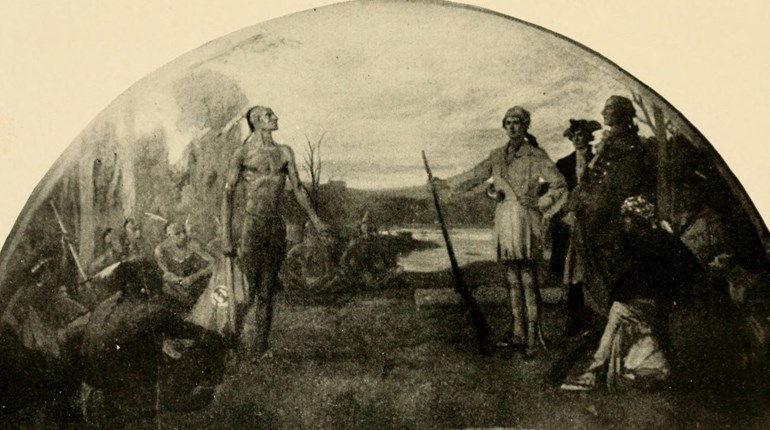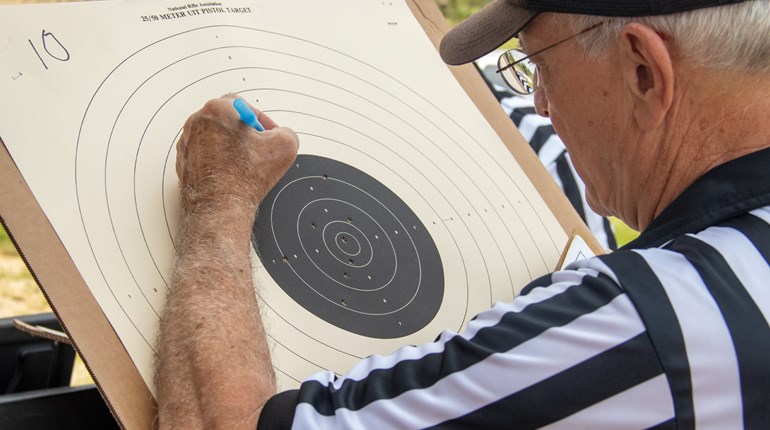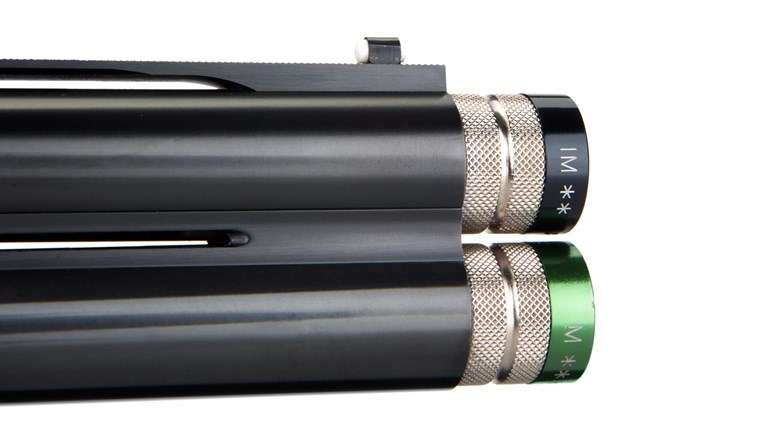
In 1862, Jack Hinson owned a large, prosperous plantation along the Kentucky-Tennessee border, known as Bubbling Springs. The Civil War had been raging for the past two years, but somehow Hinson had managed to remain neutral, friendly to enlisted men and officers on both sides of the battle.
But that all changed one late-fall day when two of Hinson’s sons—George, age 22; and John, age 17) went hunting together and were spotted by occupying Union troops. Accused of being “bushwackers” (Southern sympathizers), the brothers were executed on the spot and decapitated. Their severed heads were then taken back to the plantation house by the soldiers and placed on the gateposts of the front yard, as a warning to other members of the family.
Jack Hinson was understandably both shocked and outraged. After all, hadn’t the Union General himself, Ulysses S. Grant, once visited Hinson’s plantation as a guest? Whatever kindness Hinson may have felt toward the North instantly and completely evaporated—he swore revenge.
But Hinson, being an older man, did not hastily run off to join the Confederate Army. Instead, he conceived a more calculated plan; one that would ultimately result in the deaths of many Union soldiers and sailors and have hundreds of federal troops eventually hunting him.
Hinson first commissioned a special rifle, to be built by a local gunsmith. A .50-caliber, percussion-cap muzzleloader, the gun was a typical Kentucky rifle save two differences: its weight (18 pounds), and its lack of the usual decorative brass ornamentation. Both attributes were intentional. The long, heavy octagonal barrel would make the gun an excellent long-range sniper rifle, and the plainness of the gun would aid in its camouflage.
The first victim of Jack Hinson’s new rifle was the lieutenant of the patrol that had killed Hinson’s two sons. Hinson shot him from ambush while the lieutenant was riding horseback at the head of a column. Several months later, Hinson’s second victim was the soldier who had placed Hinson’s sons’ heads on the plantation gateposts.
Hinson then relocated to a natural sniper nest miles away, overlooking the Tennessee River. This particular section of river, known as the Towhead Chute, was a narrowing in the stream where Union Navy gun boats and troop transports were slowed during their trip upstream by the swift current. Hinson knew of the place, and he also knew that the soldiers and sailors on deck aboard those enemy vessels would be easy targets for his rifle.
From his vantage point high above the river, Hinson would rest his heavy rifle on a rock or tree limb and shoot men 500 or more yards away. An excellent marksman, he used only open sights and tallied more than 100 kills; the soldiers on the boats often never even knew from which direction the deadly shot had been fired. Hinson’s shooting was so accurate that one boat even stopped in mid-stream, dropped anchor, and surrendered to Hinson by running a white tablecloth up the signal mast. It was the first and only time in military history that an entire boat surrendered to a single man.
When Hinson saw the white flag he ceased fire, but had no idea what to do next. Neither did the boat captain. The boat remained motionless in the river for a time, but when no Confederate soldiers swarmed from the woods to take command, the captain eventually ordered the anchor raised and the ship to move on. The incident was one of the strangest of the American Civil War.
Jack Hinson and his deadly rifle became such a menace to Union forces that specific orders were issued to either capture or kill him. As a result, parts of nine regiments—both cavalry and infantry—and an amphibious task force of specially-built Navy boats with a special-operations marine brigade targeted him. He was never taken.
Nevertheless, Hinson and his family paid a high price for his involvement in the war. In addition to the loss of his two sons, the family plantation was burned to the ground by Union troops, and the family was forced to leave the area. Today, the region where Bubbling Springs plantation once stood is part of Land Between the Lakes National Recreation Area (http://www.landbetweenthelakes.us/).
Jack Hinson’s famous, custom-made muzzleloading sniper rifle still exists. After passing through some half-dozen hands through the years, it is today owned by Judge Ben Hall McFarlin of Murfreesboro, Tennessee.
If you’d like to read the complete story of Jack Hinson, Civil War sniper, pick up a copy of the book Jack Hinson’s One-Man War, written by Lieutenant Colonel Tom C. McKenney (USMC retired). A great read, it is highly recommended for anyone who enjoys Civil War history or unique, vintage firearms. The book was published by Pelican Publishing Company in 2012.






































